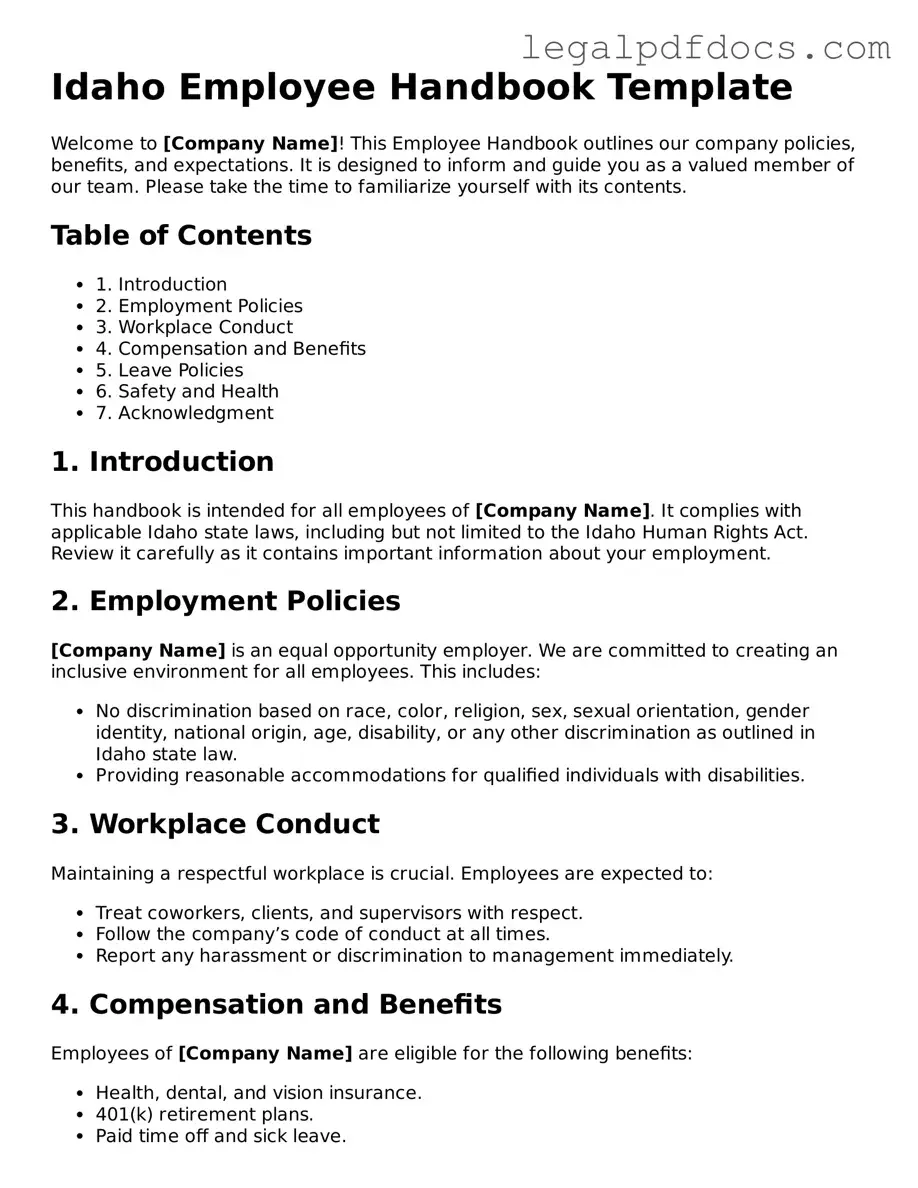In the state of Idaho, the Employee Handbook serves as a vital resource for both employers and employees, outlining the expectations and responsibilities within the workplace. This comprehensive document typically includes important policies related to workplace conduct, attendance, and safety procedures, ensuring that employees understand their rights and obligations. Additionally, it often details the company's approach to benefits, including health insurance, vacation time, and sick leave, fostering a clear understanding of what employees can expect during their tenure. Furthermore, the handbook may address disciplinary procedures and grievance processes, providing a framework for resolving conflicts and maintaining a harmonious work environment. By establishing these guidelines, the Idaho Employee Handbook not only helps protect the rights of employees but also supports employers in creating a structured and compliant workplace. Understanding the key components of this form is essential for both parties, as it lays the foundation for a productive and respectful employer-employee relationship.
